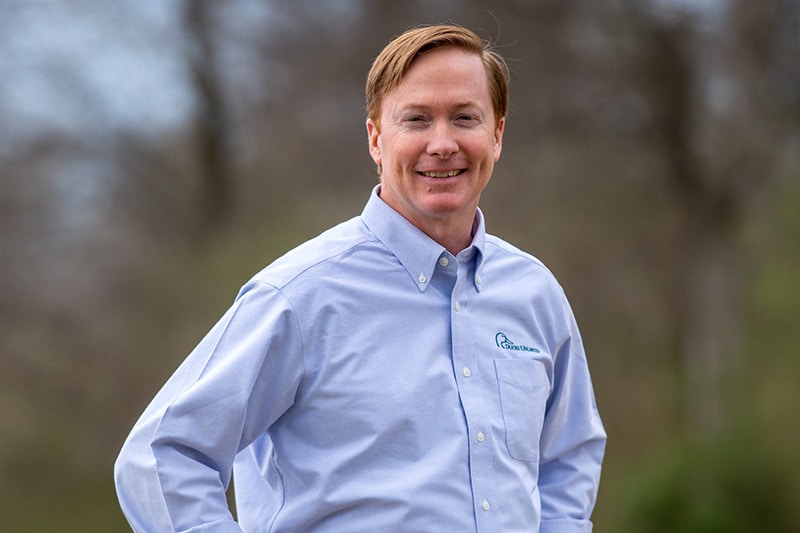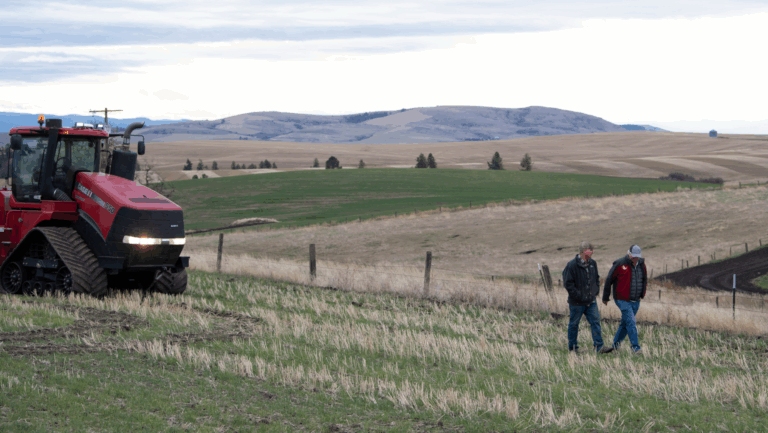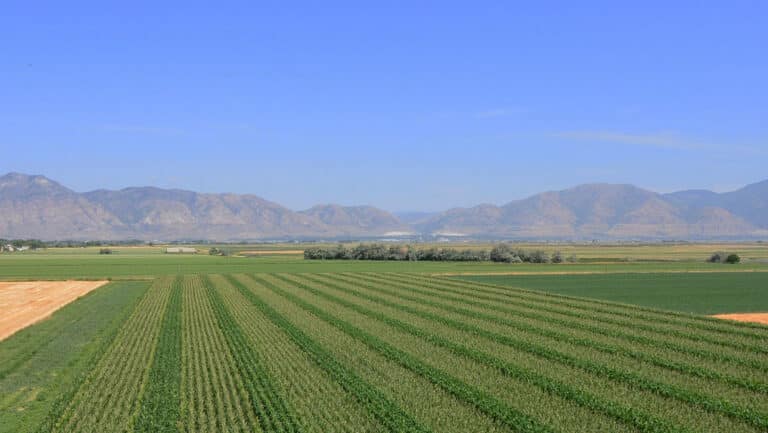Understanding Conservation Easements: Q&A with Adam Putnam
Learn more about rural land and habitat conservation with AgAmerica’s Advisory Board Member Adam Putnam.
Few know more about the ins and outs of conserving our nation’s wildlife habitats and rural farmlands through easements more than former Florida Commissioner of Agriculture and current CEO of Ducks Unlimited, Adam Putnam.
A fifth-generation farmer who represented Florida for five terms in the U.S. House of Representatives, Commissioner Putnam spent 22 years in public service dedicated to preserving and protecting agricultural land and became well-versed in the fine print of conservation land easements.
During his role as Florida Ag Commissioner, he spearheaded the protection of more than 50,000 acres of working agricultural lands and made land conservation a top priority—increasing easement purchases of raw land to simultaneously protect these wildlife habitats and benefit the farmers who owned them. After his long tenure of public service, Adam Putnam continued his conservation efforts in the private sector as CEO of Ducks Unlimited—an American nonprofit organization dedicated to the conservation of wetlands and associated habitats for waterfowl, wildlife, and people. In this role, Former Commissioner Putnam is overseeing and expanding a successful land conservation program that has secured nearly 500,000 acres in easement acreage and an additional 100,000 acres each year through government partnerships.
FAQs Regarding Conservation Easement Programs
While a variety of easement programs exist, it can be challenging to understand the differences among them. AgAmerica recently had the opportunity to discuss the intricacies of easement agreements with Former Commissioner Putnam. During this conversation, he provided useful insight into the most common questions surrounding conservation easements including benefits, requirements, and more.
What is the main purpose of conservation easement programs?
Conservation easements are voluntary, legal real estate agreements that preserve conservation values relative to the developmental use of rural land that serves to protect natural resources and wildlife habitat. They can be sold or donated to nonprofit organizations, state agencies, and federal agencies. Beyond protecting the land and wildlife that reside within it, conservation easement programs help preserve working lands for research on optimizing conservation practices, from habitat restoration to wildfire prevention.
How are easement lands selected?
Organizations or programs that purchase conservation easements have predetermined criteria for lands that qualify for easement funding, often including priority geographic areas aligned with the source of easement funding and objectives of the program. The easement selection process is opportunistic with many of these programs and often varies by region. The Western Mountains and Northern Plain regions focus on protecting the prairie potholes where 70 percent or more of North American ducks are produced each year. The Mississippi River Valley and Delta region use easement purchases to protect and restore bottomland hardwoods. The Southern Plains focus on prairie grasslands and quail habitats. Eastern states like Kentucky and North Carolina use easement purchases and donations to facilitate the reintroduction of elk in places where they were wiped out in the early 1800s.
What are some of the benefits of securing easements on property?
The use of conservation easements can fall into two main buckets. For farmers, easements are a way to protect their property and maintain their farming heritage and traditions for future generations. They have the potential to provide additional income revenue and tax benefits while conserving the natural value of their land. Farmers interested in easements are typically looking to build an estate plan through the sale of these easements to reputable federal, state, or nonprofit organizations. The other bucket includes wealthy individuals who derive substantial income from assets unrelated to the land. These individuals often own land for hobby farms or recreational hunting camps and are interested in lowering their taxable burden while also conserving the wildlife habitat within the rural lands they own.
How are these easement programs funded?
Easement funds administered by U.S. Fish and Wildlife Service programs are generated through the purchase of duck stamps and direct Congressional appropriations through mechanisms such as the North American Wetlands Conservation Act, along with excise taxes paid on the manufacturing of ammunition, firearms, and other hunting gear. A portion of these funds is turned into grants to state wildlife agencies to protect habitats. In the nonprofit sector, easement funds come from membership fees, donations, and fundraising events.
What restrictions are implemented on easement land?
Restrictions will vary depending on what easement program you decide to utilize. Most easement programs through nonprofits like Ducks Unlimited are very supportive of agriculture, where the main goal isn’t to tell you how to farm but rather to protect the open water and wetlands on American farms without getting in the way of day-to-day operations. For example, if you own 700 acres in South Dakota, Ducks Unlimited would only be interested in the acreage that contains traditional prairie potholes. Protecting these habitats with minimal interruption could be as simple as delineating prairie potholes and creating buffer areas that will not be farmed to protect natural duck nesting habitats. The criteria will vary on each piece of land considered while supporting farmers in preserving their land, their farming operations, and the habitats that sustain fish and wildlife resources.
How is easement land monitored once sold?
Easement monitoring responsibility falls to the easement holder. While not always required, it is common for purchased and donated easements to be accompanied by a modest cash contribution to endow the monitoring of the property. This agreement is typically written in the initial terms and is open to negotiation. Once agreed upon, the method of monitoring can vary per easement, therefore, a clear discussion of initial terms is key when establishing a mutually beneficial partnership.
What factors should be considered when selling or donating easements on land?
One important point for rural landowners to understand is that they’re in the driver’s seat when it comes to selling easements on their property. It is not something to be rushed. Landowners should take the time to familiarize themselves with the easement terms and ensure they are comfortable with all aspects of the agreement. Don’t be afraid to shop around and find an easement program that encompasses your long-term goals for the operation. For example, Ducks Unlimited may have different restrictions than Nature Conservancy or the U.S. Fish and Wildlife Service. Take the time to understand your options and think about the long-term future of your operation. Will you want to build houses on this property or diversify your crops in the future? Take these potential developments into consideration and incorporate them into your easement agreement to avoid future roadblocks.
What are some conservation programs or organizations that can assist in securing easements on my property?
There are hundreds of easement programs to choose from in the U.S., so it’s important to think about your ultimate goals. There are state and federal programs to purchase easements through the U.S. Department of Agriculture, U.S. Fish and Wildlife Service, and more. In fact, the Department of Defense has an aggressive easement purchasing program to protect lands that neighbor military bases. If you choose to utilize a nonprofit organization for your easement, there are many accredited land trust organizations like Ducks Unlimited that can assist you through the process. It is important to note that nonprofits typically accept donations but will also purchase easements in some cases. The main point to remember is to clearly define your easement priorities and understand you have a variety of options to best align the easement with your operation goals.
Making the Most of Rural Land Ownership
Through easement purchases and donations for working farm and ranch lands, rural landowners can ensure their land will stay in agriculture and continue the critical role of feeding our planet for generations to come.
“Easements allow property owners to continue their agricultural and farming practices, while at the same time providing security for vital wildlife habitat. Conservation easements are also a tremendous way for landowners to ensure their legacy continues so future generations can enjoy the wild outdoors the same way we have.”
– Adam Putnam
As a champion for the future of American agriculture, AgAmerica assists clients in making the most of their rural land investment without compromising the valuable resources and habitats it holds. If you would like to learn more about partnering with a lender who is singularly focused on agricultural land and committed to providing clients with the resources needed to achieve long-term success, contact one of our land lending specialists today.
Disclaimer: This material has been prepared by AgAmerica Lending and affiliates for informational purposes only, and should not be relied on for, tax, legal, or accounting advice. You should consult your own tax, legal, and accounting advisers before engaging in any transaction.







